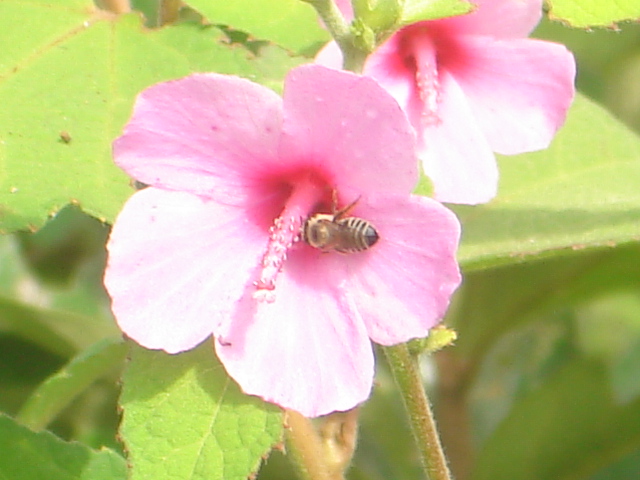Bee diversity and floral resources along a disturbance gradient in Kaya Muhaka Forest and surrounding farmlands of coastal Kenya
DOI:
https://doi.org/10.26786/1920-7603(2017)fourAbstract
Bees provide important pollination services that maintain native plant populations and ecosystem resilience, which is critical to the conservation of the rich and endemic biodiversity of Kaya forests along the Kenyan Coast. This study examined bee composition and floral resources from the forest core to the surrounding farmlands around Kaya Muhaka forest. In total, 755 individual bees, representing 41 species from three families were recorded: Apidae, Halictidae and Megachilidae. Overall, Apidae were the most abundant with a proportion of 76% of the total bee individuals, Halictidae at 14% and Megachilidae at 10%. Bee composition was similar between forest edge and crop fields as compared to forest core and fallow farmlands. We found a significant decrease in bee diversity with increasing distance from the forest to the surrounding farming area. A high abundance of bees was recorded in fallow farmland, which could be explained by the high abundance of floral resources in the habitat. We found floral resources richness to significantly affect bee species richness. These findings are important for understanding the effects of land use change on insect pollinators and their degree of resilience in disturbed habitats.

Downloads
Published
How to Cite
Issue
Section
License
Copyright (c) 2017 David Odhiambo Chiawo, Callistus K.P.O. OGOL, Esther N. Kioko, Verrah A. Otiende, Mary W. Gikungu

This work is licensed under a Creative Commons Attribution 4.0 International License.
JPE is an open access journal which means that all content is freely available without charge to the user or his/her institution.
Authors who publish with this journal agree to the following terms:
1) Authors retain copyright and grant the journal right of first publication with the work simultaneously licensed under a Creative Commons Attribution License that allows others to share the work with an acknowledgement of the work's authorship and initial publication in this journal.
2) Authors are able to enter into separate, additional contractual arrangements for the non-exclusive distribution of the journal's published version of the work (e.g., post it to an institutional repository or publish it in a book), with an acknowledgement of its initial publication in this journal.
3) Authors are permitted and encouraged to post their work online (e.g., in institutional repositories or on their website) prior to and during the submission process, as it can lead to productive exchanges, as well as earlier and greater citation of published work (See The Effect of Open Access).
To assure a broader targeted audience, content will be included into databases (such as EBSCO) and directories (such as DOAJ).











